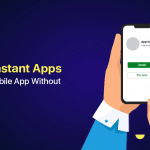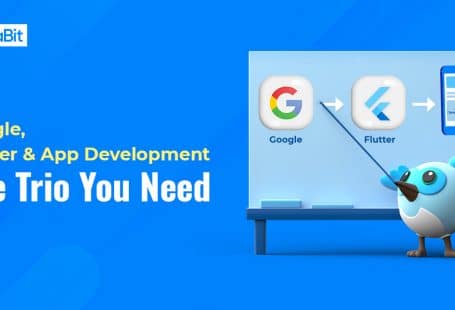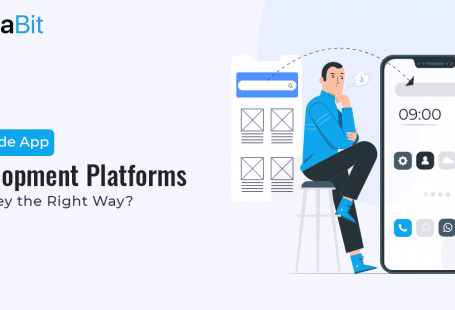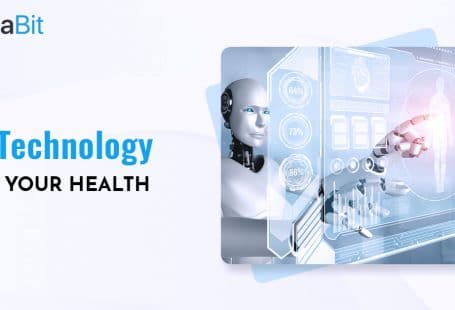Why shouldn’t people be able to teleport wherever they want?
–Palmer Luckey (Founder of Oculus VR)
We all dreamt of teleporting to scenic places in the blink of an eye when we were children. However, maturity made us understand the difference between a dream and a reality, and our exciting imagination started to fade away.
But could we ever imagine that our “dream” can someday become our reality and generate an unignorable buzz for businesses?
Yes, we’re talking about Virtual Reality (VR); as the quote above suggests, people should be able to teleport wherever they want. This is exactly what VR brought to the market, close your eyes and break the connection with reality in just a second.
Businesses observed the increasing demand for Virtual Reality app development, and they dived in.
But have you ever imagined, what if instead of teleporting ourselves to another place, we could amalgamate our reality with a virtual environment?
Imagine designing your own fashion studio with virtual objects in your physical environment. If you like the idea of it, Mixed Reality (MR) is here for you.
Human-Computer Interaction and Perception

Over the past decades, research on the relationship between a computer and human beings has been carried out, resulting in the discipline known as Human-Computer Interaction (HCI). Since the launch of computers, humans are continually interacting with them via various means like a keyboard, a mouse, touch, voice, ink and even Kinect skeletal tracking.
However, the traditional methods of HCI are being updated continually to become new and better via advancements in sensors and processing. The interaction that happens between the environment and a computer is known as environmental understanding or perception. This is the reason why Windows APIs displaying the environmental information are known as Perception APIs.
These environmental inputs detect surfaces and boundaries (spatial mapping and scene understanding), a person’s position in the world (head tracking), environmental sound, ambient lighting, location and object recognition.
Environmental input, human interaction and computer processing combined set the ball rolling for an authentic Mixed Reality experience.
Movements in the physical world affect the actions of the virtual world.
This makes mixed reality app development the business of the future. And the quicker you bring the future to the present, the better will your business benefit.
What is Mixed Reality?
Mixed Reality blends the digital and physical world, connecting the links between computer, human and environment interaction. It combines many advanced technologies, mainly Virtual Reality (VR) and Augmented Reality (AR).
Virtual Reality:
Virtual reality app development is a buzz already, as companies use it to break the connection between the natural world and the virtual world. It does not account for the user’s immediate surroundings; instead, it takes the user through a whole different virtual experience imitating teleportation.
Augmented Reality:
Augmented reality app development revolves around roughly displaying digital content over the real world. It does not account for your environment nor allows you to interact with it digitally. In simpler words, AR sets over any surface and the physical world acts as a static background for it.
Unlike the rest, MR devices continually gather information from the surroundings, which efficiently place the digital data over the physical environment while allowing users to interact with it.
The experiences that enable the collaboration of virtual Reality with augmented reality form the background of Mixed Reality. Such as:
- Placing a digital object in the physical environment, like a hologram, as if it was there.
- A digital representation of a human being, like an avatar, displays the location of that person standing wherever they are while adding notes. In other words, asynchronous collaborations in the physical environment.
- Working on the physical boundaries or the physical world, digitally. The walls and furniture appear digitally within the experience to avoid the heavy work with physical objects.
A great representation of the above pointer can be the MR advertisement released by Microsoft.
Devices powering the MR experience:
The main devices that deliver a tremendous mixed reality experience are:
- Immersive devices: These devices build a sense of presence by hiding the physical world and changing it by providing a digital experience.
- Holographic devices: These devices place the digital content in the physical world as if it is there.

Many may say the Mixed Reality is for the future. Well, I agree, but the current market trend and the quick adaptation to MR say otherwise.
Multiple industries are engaging in mixed reality app development, and we can indeed say they are living in the future, living their best!
Here’s where MR is a daily occurrence:
- Education:
Mixed Reality applications are heavily used in the academic industry to enhance the learning capacity and bring in innovative measures to help students take in information.
It helps facilitate a creative way of learning that is not just efficient but also fun.
Students can take in extra information by manipulating and using virtual objects to study the relevant topics more deeply with 3D objects and stimulators. Using these life-like objects in their classrooms, students can understand their subjects clearly as they imply literary knowledge practically.
How Does MR Benefit Classrooms?
- Students can touch and manipulate objects
- Gain an insightful experience by interacting with the environment
- It’s fun
- One can learn any subject with MR
An incredible example of MR in education is Case Western Reserve University in Ohio, where students took learning anatomy to the next level with MR.
- Entertainment:
VR has been in the entertainment industry for quite a long time, and so has been AR. With the success of games like Pokemon Go, one thing is for sure, that both AR and VR are here to stay.
But it’s not just restricted to the gaming industry. Even the entertainment industry is now shifting to a much more immersive experience that is sure to bring goosebumps, i.e., MR.
The technology has improved so much that the big screen industry is trying its best to incorporate it into its upcoming projects. The idea behind interactive storytelling is opening up many doors for mixed Reality’s integration in entertainment.
For example, the company Magic Leap is levitating cinematic experience using Mixed Reality through the Dynamic Digitised Lightfield Signal.
Here you can see magic leap’s mixed Reality in action.
- Engineering:
Mixed Reality is becoming a game-changer for engineering. The engineering sector takes advantage of advanced technology by utilising virtual sculpting and 3D models to project monitoring apps and remote repair guidance.
How does MR benefit engineering?
- Engineering training
- Real-time simulation of the engineering process
- Monitor services with industrial IoT devices using MR
Using 3D modelling applications with Mixed Reality engineering professionals can efficiently build up their project in a shared virtual environment. Working on such projects allows engineers to spot errors early and make design manipulations in real-time.
- Healthcare:
The potential of Mixed Reality in Healthcare is enormous. The most apparent use of it is in training and education. A brilliant example of MR in healthcare is its use in educating about surgeries. The students attend real-time surgeries through MR technologies while surgeons are actually operating.
Another example is its usage in anatomy; such topics can be enhanced with MR to deeply understand the different layers of the human body. By producing three-dimensional models of anatomy combined with easy access to information, the healthcare industry can revolutionise the way medicine is taught.
Check out MR elevating the healthcare industry.
The essential infrastructure:
Many may presume that Mixed Reality is all about the headsets, but that’s just the half-truth. It requires a robust and high-performing infrastructure. Some MR technologies may require the use of multiple sensors and cameras. These sensors are deployed in the external environment while others, such as the Microsoft HoloLens, have everything deployed internally.
Almost every MR technology headset has the following elements:
- Camera
- Sensors
- Gaze trackers
- Microphones
- Infrared detectors
- Accelerometers
These headsets work as an interface between the natural environment and the digital world. However, most MR applications are deployed in the cloud. Running such heavy data on the cloud, which is stored many miles away, pressurises the bandwidth.
Luckily, Mixed Reality can utilise significant mobile broadband technologies, including MEC and 5G, to offer an ultra-low latency speed. One can interact with all the mixed reality content through the right equipment.
The Future of Mixed Reality
Imagine trying on clothes without even going to the store, testing if your store equipment will fit the space of your showroom, or trying out different decor before actually choosing one. How convenient would it be?
This is why tech giants like Google, Apple, Microsoft, and Intel already engage themselves in Mixed Reality application development. Apple has even patented many MR technologies, followed by Google and Samsung.
Magic Leap also makes headway in mixed Reality with its MR app that projects light straight into the retina.
With such big names in the mixed reality industry, it is sure that MR is the one technology future definitely needs. If companies adapt to MR, we may only need one screen to replace all the devices we use and bring the screen to our ground (environment). Not just that, MR will create more business opportunities and increase the number of jobs.




